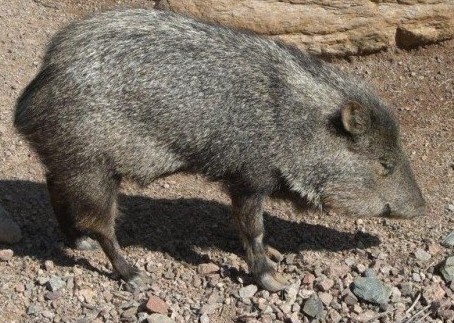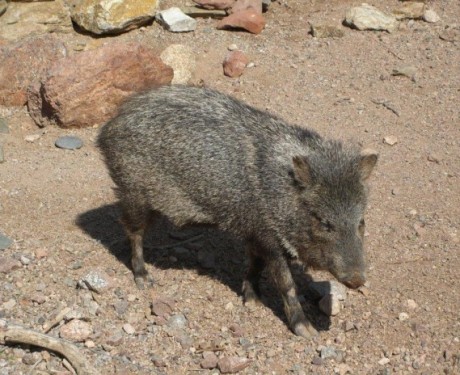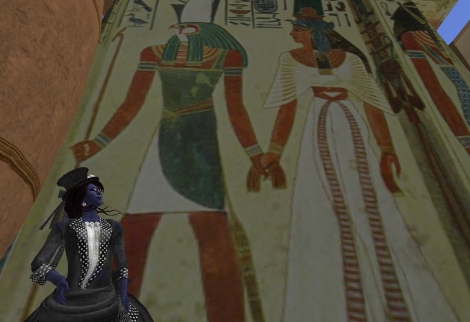Javelinas are indigenous feral pigs of the southwestern United States. I too am native to the desert southwest. I live in Arizona and was raised by my parents and paternal grandparents in southern New Mexico. I am fond of pigs, javelina, large dogs, sheep, seals, and other sweet animals. Let’s start with javelina!
Taxonomy
Javelina are shy and diminutive. They were initially categorized as a type of pig. Upon further consideration, early biologists of the New World decided they were cloven-hoofed ungulates.
Javelina superficially resemble a scaled-down version of the renowned capybara of South America; however capybaras belong to order Rodentia. Javelina are NOT rodents!

Javelinas are curious critters!
Happily, javelinas were restored to their prior classification, as a type of piggy. (Ungulate no longer holds any taxonomic meaning, after lengthy debate by evolutionary biologists). According to the Integrated Taxonomic Information System (ITIS), the taxonomy of javelina is:
- class Mammalia,
- order Artiodactyla,
- family and genus Tayassuidae
Etymology
Another name for javelina is collared peccary. This term has been in continuous use since the 18th century, in English-speaking regions of the southern United States and the Caribbean Islands.
Both “javelina” and “javelinas” are standard English usage for singular and plural forms. I am capricious, so I use both.
In the ecosystem
Javelinas were a human food source during the 17th – 19th centuries (and possibly before), throughout most of the Americas. Some will continue to end up as meals; I prefer not to think about that! They are not considered to be an endangered species.
Javelinas are mild omnivores. They munch on worms and small salamanders. Mainstays of their diet are fruit, roots, palm nuts, grass, and tubers. In more populated areas, javelinas add garden plants to their menu. They will occasionally indulge in an ornamental plant or tulip bulb.
Inquisitive and oink-like
I spotted this young javelina wandering around the perimeter of the Phoenix Zoo in Papago Park.
Desert and suburban javelinas of Arizona are no different from other partially nocturnal animals. They are good at sharing habitats with humans, and merely require sufficient cover for their activities.
About my blog
The central themes of my blog will be:
- fun with probability and statistics
- web development trends and Internet history
- economics, political economy, and some politics
- science and technology
- information security and risk analysis
- virtual world of Second Life
- visual curiosities: cartography, typography, geography, and data visualization
- pigs and porcine creatures.
I am Ellie Heartsdale in Second Life and its neighbor, OS Grid. I have posted about my adventures there in a few other places.
The tone will be whimsical and inquisitive. I’m a novice to the blog world. Patience will be necessary for the foreseeable future.
Thank you.







[…] pigs Horus Shows the Way […]
LikeLike
Please, let’s pick up the Japan question offline.
LikeLiked by 1 person
Certainly! I would be happy to do so. I am friendly. What is your preferred venue, in order to continue discussion?
LikeLiked by 1 person
[…] Ides of March are past, and we head into spring. We also approach the one-year anniversary of this blog on March 21 or thereabouts, right in time for the vernal equinox. I would like to take this […]
LikeLike
[…] pigs […]
LikeLike
Hi Ellie,
Your “voice” sounds familiar. Did you once have a blog with melons in the name?
LikeLike